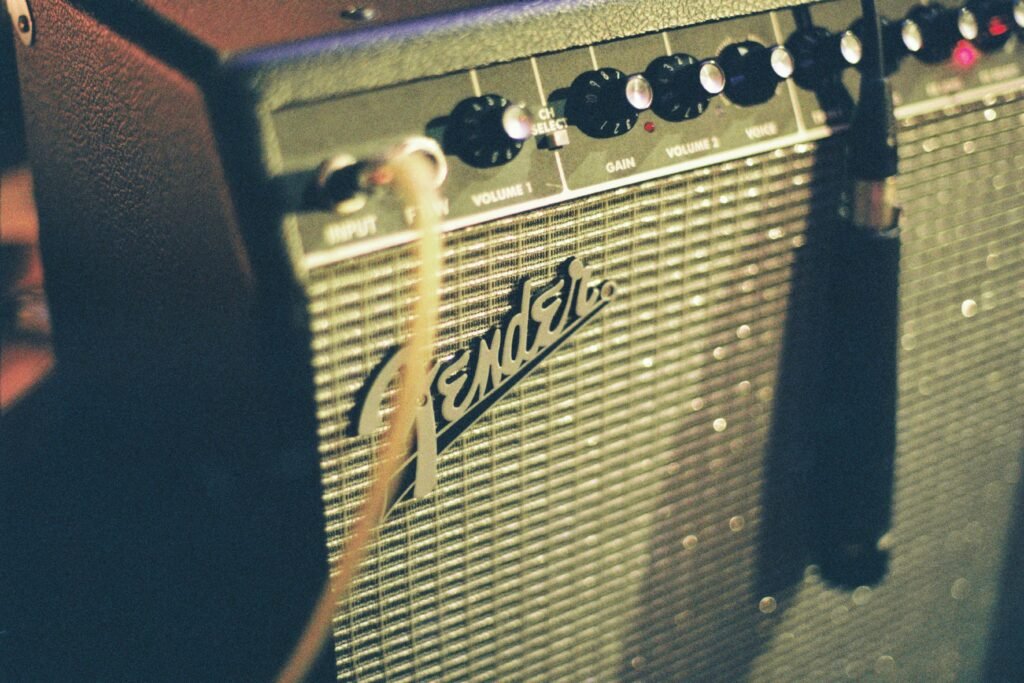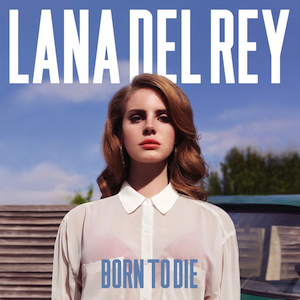Lana Del Rey’s Born to Die, released in January 2012, marked a significant turning point both in her career and in the wider pop landscape. As her major-label debut, it built on the indie success of her 2011 viral single “Video Games,” offering listeners a fully realized aesthetic that would come to define her sound. For Lana, Born to Die wasn’t just a collection of tracks—it was a manifesto of melancholic glamour, a cinematic universe where heartbreak, fame, and nostalgia collided.
The album emerged at a time when pop music was dominated by electronic dance beats and radio-friendly hooks, yet Born to Die broke from the mold, embracing a darker, moodier soundscape steeped in orchestral arrangements, trip-hop beats, and vintage Americana.
Artistic Intentions
In terms of artistic intentions, Lana has spoken about Born to Die as an exploration of “the dark side of the American dream.” With the album, she sought to juxtapose the beauty and decay that permeates her storytelling, creating a complex narrative around love, loss, and longing. Her persona—a femme fatale with the heart of a dreamer—was deeply tied to this vision, and the music reflected a deep yearning for the glamour and tragedy of past eras, while still confronting the grit of contemporary life.
The album feels like a lush, melancholic ode to doomed romance, Hollywood glamour, and a kind of timeless sadness. This thematic complexity, coupled with Lana’s distinctive vocal delivery, set Born to Die apart as a new direction, not only for her, but for pop music as a whole, introducing an introspective, noir-pop sensibility that hadn’t been widely embraced before.
Sonic Exploration

The sonic landscape of Born to Die is as lavish and atmospheric as the themes Lana Del Rey explores throughout the album. In terms of production quality, the album is richly layered, with a cinematic grandeur that elevates its melancholic undertones. Co-produced by Emile Haynie, who brought his experience from working with Kanye West and Kid Cudi, the album benefits from a polished, high-budget studio sound.
Despite its lushness, there’s a deliberate use of reverb and echo that gives the album a haunting, almost distant quality, as though the listener is hearing it from the depths of a faded memory. This polished yet slightly worn production style perfectly serves Lana’s vision—evoking an ethereal, dream-like atmosphere that mirrors the album’s fixation on fleeting beauty and romantic despair.
Musical Arrangements
Musically, Born to Die showcases a seamless blend of orchestral and modern elements. The sweeping strings that open the title track set a dramatic tone, while tracks like “Summertime Sadness” and “National Anthem” balance those grandiose arrangements with subtle, almost hip-hop influenced beats. The album’s arrangements often play with contrasts: cinematic strings paired with gritty electronic beats, and Lana’s velvety vocals layered over complex instrumentals.
One of the standout features is the way Del Rey’s voice is used almost as another instrument, modulating between sultry alto lines, airy falsetto, and a detached, almost spoken delivery. This variety keeps the album sonically dynamic, with her voice often capturing the emotional contradictions at the heart of her songs—tough yet fragile, glamorous yet self-destructive.
Genre Elements
Genre-wise, Born to Die is difficult to pin down to one specific category, but that’s part of its brilliance. It draws heavily from the baroque pop tradition, with lush orchestral instrumentation reminiscent of 1960s chamber pop, while also borrowing from hip-hop’s beats and trip-hop’s dark, moody textures. The album flirts with elements of sadcore, a subgenre known for its slow tempo and bleak subject matter, as well as vintage Americana, evoking the feel of classic Hollywood soundtracks or mid-century pop balladry.
This genre-mixing was a bold move at a time when mainstream pop tended to be more homogeneous, and it allowed Lana to carve out a unique sonic space. Her ability to blend these disparate influences into a cohesive, emotionally resonant sound is one of Born to Die‘s greatest achievements, solidifying Lana Del Rey as an artist who defied the genre boundaries of her time.
Lyrical Analysis

At the heart of Born to Die lies a tapestry of recurring themes and motifs that have come to define Lana Del Rey’s signature style. The album is a meditation on the elusive, often destructive nature of love, fame, and the American dream. Lana weaves together narratives of doomed romance, tragic beauty, and longing for a life filled with glamour, yet inevitably tarnished by loss and decay.
Themes of heartbreak, self-destruction, and nostalgia permeate every corner of the album, creating a cohesive lyrical world where desire and melancholy are inextricably linked. Whether she’s mourning lost love in “Video Games” or reflecting on the fleeting nature of happiness in “Summertime Sadness,” the lyrics consistently express a yearning for something unattainable, often tinged with fatalism and resignation.
Lyrical Depth
The lyrical depth of Born to Die reveals a combination of straightforward narrative and abstract, poetic imagery. Songs like “Blue Jeans” and “Born to Die” are relatively direct in their storytelling—portraits of toxic, all-consuming relationships that feel cinematic in their detail.
However, Lana also delves into more abstract, metaphorical language, especially in songs like “Off to the Races,” where she juxtaposes Gatsby-esque imagery with street-smart references to Bonnie and Clyde. Her lyrics blend the personal with the mythic, creating an atmosphere where reality and fantasy blur. This interplay between narrative and abstraction adds to the poetic nature of the album, encouraging listeners to interpret the deeper meanings behind her often cryptic expressions of love and loss.
Emotional Impact
Emotionally, Born to Die is an album steeped in sadness, but it also evokes a deep sense of longing and romanticism. The lyrics, paired with Lana’s wistful vocal delivery, conjure a feeling of tragic beauty, making the listener empathize with her heartache and inner turmoil. Tracks like “Carmen” and “This Is What Makes Us Girls” explore the darker sides of youthful rebellion and self-destruction, but without moral judgment—Lana portrays these moments as essential parts of the human experience.
There is a vulnerability to the lyrics that makes the emotional impact all the more profound, particularly in how they reflect universal themes of love and loss. Rather than delivering sweeping statements of resolution or healing, the lyrics on Born to Die leave listeners suspended in the emotion itself, heightening the sense of timeless sorrow and glamorized sadness that Lana so masterfully crafts.
Cohesion and Flow

One of the most striking aspects of Born to Die is how well its tracks flow together, creating a cohesive and immersive listening experience from start to finish. The album doesn’t merely function as a collection of songs but as a cinematic journey, with each track serving as a chapter in the larger narrative of Lana Del Rey’s wistful, romanticized world. There’s an emotional and thematic progression that feels intentional—starting with the melancholic grandeur of the title track, “Born to Die,” and concluding with the bittersweet reflections of “This Is What Makes Us Girls,” the album takes listeners through a carefully curated range of emotions, always maintaining an underlying sense of tragic beauty.
The sequencing of the tracks plays a key role in this narrative flow. For example, “Born to Die” sets the stage with its sweeping orchestral backdrop and fatalistic declaration, “We were born to die,” establishing the album’s preoccupation with love and loss. It’s followed by “Off to the Races,” a more upbeat but equally dark track, keeping the momentum going while introducing Lana’s characteristically cinematic storytelling. This ebb and flow between soaring ballads and mid-tempo, hip-hop-inflected tracks—like “National Anthem” and “Dark Paradise”—creates a dynamic listening experience.
The balance between these different moods is handled with care, ensuring that the album never feels monotonous despite its consistent focus on melancholy themes. Each track bleeds into the next, not necessarily in terms of sonic transitions, but in how they develop the album’s emotional landscape, moving fluidly between moments of dreamy nostalgia, heartbreak, and fleeting euphoria.
Thematic Consistency
Thematic consistency is another element that solidifies Born to Die as a unified body of work. From beginning to end, Lana Del Rey is steadfast in her exploration of doomed romance, yearning for lost love, and a nostalgia for past eras. Tracks like “Blue Jeans” and “Video Games” maintain the same fatalistic tone, using vivid imagery to portray relationships that are as intoxicating as they are destructive.
Even when the tempo shifts—as in the brighter, more anthemic “Diet Mountain Dew” or the haunting “Summertime Sadness”—the thematic throughlines remain intact, centered on the fragility of love, beauty, and youth. Lana’s persona, too, is consistent throughout the album: the self-aware femme fatale, both enamored with and imprisoned by her own desires, maintains a strong presence on every track, which helps ground the album’s lyrical and thematic core.
If there is a critique to be made, it might be that this consistency sometimes borders on predictability. While the album’s moody, noir-pop aesthetic is compelling, the lyrical themes can occasionally feel repetitive, with Lana returning to the same tropes of tragic love, Americana, and fame. However, this repetition is part of what gives Born to Die its hypnotic, almost trance-like quality. Rather than feeling jarring, the focus on these recurring themes creates a kind of emotional and aesthetic loop that draws listeners deeper into her world.
Cohesion
In terms of cohesion, Born to Die functions exceptionally well as a unified artistic statement. There are no wild shifts in style or tone that disrupt the album’s flow. Even when moving between different musical influences—whether it’s the hip-hop beats of “National Anthem” or the orchestral swells of “Dark Paradise”—the album feels connected by Lana’s singular vision. Each track contributes to the broader narrative of longing, glamour, and heartbreak, making Born to Die not just an album, but a carefully crafted experience that pulls listeners into its world and keeps them suspended there until the very last note.
Standout Tracks and Moments
While Born to Die is remarkably cohesive, certain tracks stand out for their artistic merit, emotional weight, and innovative production. These songs not only capture the album’s essence but also exemplify Lana Del Rey’s ability to craft immersive, emotionally rich soundscapes.
Video Games
One of the most iconic tracks is “Video Games.” As the song that catapulted Lana into the mainstream, it remains a touchstone for her career. What sets “Video Games” apart is its stark, haunting simplicity. The dreamy, downtempo production—marked by delicate harp melodies and languid piano chords—places all the focus on Lana’s intimate, aching vocal delivery. The song’s lyrics are drenched in nostalgia and yearning, capturing the bittersweet feelings of love and loneliness. “Heaven is a place on earth with you,” she croons, before slipping into the melancholic refrain, “It’s you, it’s you, it’s all for you.” The juxtaposition of romantic idealism with quiet resignation makes this track a standout, encapsulating the album’s emotional core.
Summertime Sadness
“Summertime Sadness” is another standout, both for its emotional intensity and for the way it fuses melancholy with a sense of grandeur. The song builds from a soft, moody introduction into an anthemic chorus, where Lana’s voice soars over swelling strings and deep, pulsating beats. The track’s brooding energy perfectly captures the album’s blend of heartbreak and glamour, and it became one of Lana’s most commercially successful songs, embodying her talent for making sorrow feel cinematic. The line, “I got that summertime, summertime sadness,” has become emblematic of her unique ability to romanticize melancholy, making it both relatable and epic.
Born to Die
“Born to Die,” the album’s opening track, is another high point, setting the tone for everything that follows. Its sweeping orchestral arrangement, layered over a hip-hop-inspired beat, creates a grand, cinematic atmosphere that mirrors Lana’s introspective lyrics about love and mortality. The track’s lush production is paired with one of the album’s most memorable vocal performances. Lana’s voice moves from a hushed whisper in the verses to a commanding, almost operatic delivery in the chorus, embodying both vulnerability and defiance. The orchestral break in the middle of the song—complete with soaring strings and haunting choral echoes—provides one of the album’s most emotionally charged moments.
Memorable Moments
A standout moment occurs in “Off to the Races,” where Lana’s vocal delivery and lyrical flow veer into unconventional territory. The song is fast-paced and chaotic, blending noir-pop with hip-hop influences. Her rapid-fire verses, filled with references to old Hollywood, Bonnie and Clyde, and self-destructive love, give the track a kinetic energy that contrasts with the slower, more reflective songs on the album. The shift between her languid singing in the chorus and her almost manic delivery in the verses makes this track a wild, unpredictable ride, showcasing Lana’s ability to play with vocal textures and storytelling techniques.
Carmen
Another memorable moment comes in “Carmen,” a tragic portrait of a girl lost in the allure of fame and self-destruction. The lyrics, “The boys, the girls, they all like Carmen / She gives them butterflies, bats her cartoon eyes,” paint a vivid, cinematic picture of a character who is both glamorous and doomed. The track’s use of strings, coupled with a subtle electronic beat, creates a somber, haunting atmosphere that lingers long after the song ends. This song captures the album’s recurring theme of beauty masking inner pain, and Lana’s soft, almost detached vocal delivery amplifies the tragic tone of the narrative.
Blue Jeans
Finally, “Blue Jeans” stands out for its gritty, Americana-infused sound. The minimalistic guitar twangs and reverb-heavy production recall the golden era of 1950s rock, while Lana’s deep, sultry voice evokes classic femme fatale imagery. Lyrically, the song is a straightforward tale of obsession and devotion, but it’s Lana’s raw, aching delivery that gives it emotional heft. “I will love you till the end of time,” she sings, her voice dripping with both longing and inevitability. The cinematic build-up to the song’s final moments, where the instrumentation swells before dropping out, creates a sense of tension that perfectly mirrors the fatalistic nature of the lyrics.
Artistic Contribution and Innovation

Born to Die occupies a pivotal place within both the pop music genre and the broader music industry, particularly for its time. Released in 2012, the album diverged from the dominant trends in mainstream pop, which were largely driven by upbeat dance tracks, heavy electronic production, and bubblegum pop sensibilities. While artists like Lady Gaga, Katy Perry, and Rihanna ruled the charts with high-energy, radio-friendly hits, Lana Del Rey introduced something radically different: a slow-burning, cinematic approach that prioritized mood, storytelling, and melancholic beauty over instant gratification. In doing so, she carved out a unique space in the pop landscape, blending genres and creating a new lane for more introspective, noir-tinged pop music.
Innovation
In terms of pushing boundaries, Born to Die defied the established norms of what a pop album was expected to be at the time. Lana’s embrace of baroque pop, trip-hop, and orchestral elements set her apart from her peers. By weaving together strings, hip-hop beats, and cinematic production, she created a lush, genre-fluid soundscape that felt both nostalgic and contemporary. Tracks like “National Anthem” and “Off to the Races” are prime examples of this genre-blending, where modern production techniques meet vintage Americana aesthetics.
This fusion of seemingly disparate styles was refreshing, offering listeners something that felt timeless yet innovative, evoking classic Hollywood glamour while maintaining a gritty, modern edge. The way she integrated trip-hop beats—reminiscent of acts like Portishead and Massive Attack—into her pop ballads helped expand the sonic possibilities of pop music.
Themes & Lyricism
Perhaps the most innovative aspect of Born to Die is its thematic and lyrical approach. At a time when much of pop music focused on empowerment anthems, carefree party songs, and love in its simpler forms, Lana Del Rey explored darker, more complex emotional territories. Her focus on doomed love, toxic relationships, and the tragic side of fame was a stark departure from the prevailing optimism in the genre. Songs like “Born to Die,” “Carmen,” and “Dark Paradise” delve into themes of self-destruction, loneliness, and a deep yearning for something unattainable—concepts more commonly explored in alternative or indie music.
This lyrical complexity added a new dimension to pop, inviting listeners to sit with uncomfortable emotions rather than escape them. Moreover, the way Lana used nostalgia as a vehicle for her storytelling, drawing on images from mid-century Americana, further set her apart from her contemporaries, giving the album a timeless, almost cinematic feel.
Artistic Identity
Lana Del Rey’s creation of a fully formed persona—part femme fatale, part tragic heroine—was also a groundbreaking move. While pop stars often cultivate public personas, Lana’s was fully embedded into her artistic identity, blurring the lines between character and artist. This sense of self-aware theatricality, where she leaned into vintage glamour and melancholic mystique, influenced a wave of future artists.
She set the stage for a kind of introspective, moody pop that would later be embraced by artists like Lorde, Billie Eilish, and even elements of Taylor Swift’s Reputation and Folklore eras. The way she crafted a cohesive visual and lyrical aesthetic was instrumental in creating the “sad-girl” pop subgenre, which combined emotional vulnerability with a sense of stylized melancholy.
Multimedia
Another area where Born to Die innovated was in its visual and multimedia storytelling. Lana’s music videos, especially for “Video Games” and “Born to Die,” were central to her artistry. The lo-fi, VHS-style visuals paired with haunting, vintage Hollywood imagery created a unique aesthetic that felt like a visual extension of the album’s sonic world. This use of visuals as an integral part of the album’s narrative was ahead of its time and helped redefine how pop artists could blend music, video, and personal mythology into a cohesive artistic statement.
Closing Thoughts
Born to Die is an album that boldly defies mainstream pop conventions, offering listeners a cinematic experience drenched in melancholy, romance, and nostalgia. Lana Del Rey’s atmospheric production, genre-blending sound, and intricate exploration of themes like doomed love, self-destruction, and the elusive American dream all contribute to the album’s unique appeal. Its strengths lie in its cohesive artistic vision and the way it immerses listeners in a richly textured world that feels both timeless and modern. Lana’s use of orchestral arrangements, trip-hop beats, and noir-pop aesthetics, combined with her sultry, emotive vocal delivery, creates a lush soundscape that captures the listener’s imagination.
Weaknesses
However, Born to Die is not without its weaknesses. The album’s thematic and sonic consistency, while a strength in terms of cohesion, can also become repetitive. The focus on tragic romance, while beautifully executed, doesn’t leave much room for emotional variation, and some of the songs can blur together in tone and style. Additionally, while Lana Del Rey’s persona is compelling, it’s one that can feel distant and somewhat inaccessible to some listeners, as if she is forever playing a role rather than allowing moments of raw vulnerability.
Despite these limitations, Born to Die had a significant impact, not just on Lana Del Rey’s career but on the pop landscape as a whole. It introduced a new archetype of pop star—one who embraced moodiness, theatricality, and an unapologetically vintage aesthetic. The album paved the way for a generation of artists who would draw on its introspective, dark-pop sensibilities, and it helped redefine what emotional depth in pop music could look like.
In terms of its place in Lana Del Rey’s discography, Born to Die laid the foundation for the themes and sounds she would continue to explore in her later work. It may not be her most mature or fully realized album, but it is the one that put her on the map and created the blueprint for her distinctive style.
Official Rating
We award Born to Die with a 7 out of 10 score. While Born to Die is an impressive and ambitious debut, it doesn’t fully escape the limitations of its own formula. The album’s lush production and poetic lyricism make it a standout in the pop world, but the repetitiveness of its themes and its occasional emotional distance prevent it from reaching the heights of a perfect or near-perfect album. Nevertheless, it remains a significant, genre-defining work that continues to resonate with listeners, offering a beautifully crafted soundtrack to life’s darker, more reflective moments.
